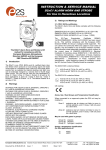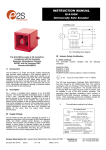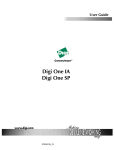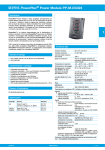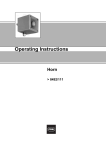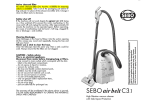Download INSTRUCTION & SERVICE MANUAL
Transcript
INSTRUCTION & SERVICE MANUAL D1xS1 & D1xS2 ALARM HORNS For Use In Hazardous Locations - Gas UL 1203 CSA C22.2 NO. 30-M1986 The D1xS1 and D1xS2 Alarm Horns also comply with the following standards for signaling equipment: UL464 CSA C22.2 NO. 205-12 3.1 Class / Division Ratings for US & Canada Class I Div 1 1) The D1xS1 & D1xS2 alarm horns are classified by UL as Audible Signaling Appliances for General Signaling and Public Mode Fire Alarm use in Hazardous Locations Introduction The D1xS1 & D1xS2 range are UL Classified alarm horns which produce a loud warning signal in a hazardous area. Sixty-Four first stage alarm sounds can be selected by internal switches and each one can be externally changed to a second, third or fourth stage alarm sound. The alarm horn may be used for Gas applications in Class I Division 1 & 2 as well as Class I Zone 1 & 2. D1xC1 & D1xC2 combined alarm horn & strobe units and D1xL1 & D1xL2 Loudspeakers are also available as well as variants for Explosive Dust Atmospheres. 2) Cautions and Warnings CAUTION TO REDUCE THE RISK OF IGNITION OF HAZARDOUS ATMOSPHERES: DISCONNECT FROM SUPPLY BEFORE OPENING. KEEP TIGHTLY CLOSED WHEN IN OPERATION. WARNING FIT SEALING FITTING IN CONDUIT RUNS WITHIN 18 INCHES FROM ENCLOSURE. EQUIPMENT MUST NOT BE INSTALLED WITH THE HORN FACING UPWARDS OF HORIZONTAL ATTENTION POUR REDUIRE LE RISQUE D’INFLAMMATION DES ATMOSPHÈRES DANGEREUSES: COUPER L 'ALIMENTATION AVANT OUVERTURE. CONSERVER FERMÉ PENDANT LE FONCIONNEMENT. AVERTISSEMENT CONDUITS DOIVENT ÊTRE SCELLÉS EN MOINS DE 18 POUCES. ÉQUIPEMENT NE DOIT PAS ÊTRE INSTALLÉ AVEC LE KLAXON TOURNÉE VERS LE HAUT DE HORIZONTAL. ABCD T6 Installation must be carried out in compliance with the National Electric Code / Canadian Electric Code 3.2 Class / Zone ratings US & Canada Class I Zone 1 IIC T6 3.3 Fire Alarm Rating The following models are approved for use as audible signal appliances for fire alarm use – public mode and produce a sound pressure level above 75dB(A) at 10 feet: D1xS1-DC024 / D1xS2-DC024 For public mode fire alarm use the temporal pattern tone No. 12 as per the tone table provided in these instructions must be selected. For Fire Alarm use, units must be supplied 18-30Vdc. 3.4 Ambient Temperature Range: D1xS1-DC024 / D1xS2-DC024 / D1xS2-AC230: -40ºC to +70ºC D1xS1-AC230: -40ºC to +70ºC for 110-120Vac 50/60Hz -40ºC to +55ºC for 120-240Vac 50/60Hz 3.5 Ingress Protection Ratings The product is rated for ingress protection as follows: IP rating per EN60529: IP66 Type rating per UL50E / NEMA250: 4 / 4X / 3R / 13 3.6 Electrical Ratings per UL Listing Model No. Nom. Voltage D1xS1-DC024 24Vdc Nom. rms current2 217mA 115Vac 60Hz 77mA 230Vac 50Hz 53mA D1xS2-DC024 24Vdc 924mA D1xS2-AC230 Ratings and Markings The D1xS1 and D1xS2 Alarm Horns comply with the following standards for hazardous locations: Ta -40°C to +70°C Installation must be carried out in compliance with the National Electric Code / Canadian Electric Code D1xS1-AC230 3) Ta -40°C to +70°C 115Vac 60Hz 268mA 230Vac 50Hz 159mA Voltage Range 10-30Vdc1 Max. rms current3 270mA @ 18Vdc 110-240Vac 82mA @ 50/60Hz 110Vac 60Hz 10-30Vdc1 1217mA @ 18Vdc 110-240Vac 293mA @ 50/60Hz 110Vac 60Hz 1) 18-30Vdc for Fire Alarm Use 2) Nom. rms current draw at nom. voltage and worst case tone 3) Max. rms current draw at worst case voltage and tone __________________________________________________________________________________________________________________ European Safety Systems Ltd. Impress House, Mansell Road, Acton, London W3 7QH [email protected] Tel: +44 (0)208 743 8880 www.e-2-s.com Fax: +44 (0)208 740 4200 Document No. D190-00-001-IS-SC Issue: 1 03-07-15 Sheet 1 of 6 3.7 Surge Current for Fire Alarm use per UL Listing Part No. Voltage D1xS1-DC024 30Vdc D1xS2-DC024 30Vdc Peak Surge Current 8.36A @ 1.44ms 9.92A @ 1.02ms RMS surge Current 966mA protection and is suitable for installation in exterior locations providing it is positioned so that water cannot collect in the horn, and the cable entry is sealed. 4.3 Installation procedure 1.09A a. Secure the D1x alarm horn to a flat surface via the three 7mm fixing holes in the mounting bracket. Surge current given at worst case voltage and tone b. Remove the explosionproof cover of the alarm horn by unscrewing it, taking care not to damage the explosionproof threads in the process (Refer to section 5). 4) Installation c. Fit an M20/NPT suitably rated cable gland or conduit entry into the hole in the enclosure and connect the field wiring to the appropriate alarm horn terminals as shown in fig. 6 (AC) or fig 8. (DC). The power supply terminals are duplicated so that units may be connected in parallel. An end of line monitoring resistor may be fitted to DC units only (see section 12). If the second and third M20/NPT entries are not used, suitably rated stopping plugs must always be fitted. 4.1 Safe Installation Requirements The product must only be installed by suitably qualified personnel in accordance with the latest issues of the relevant standards. The installation of the units must also be in accordance with the NEC / CEC and any local regulations and should only be carried out by a competent electrical engineer who has the necessary training. The Equipment must not be installed with the horn facing upwards of horizontal. To maintain the ingress protection rating and mode of protection, the cable entries must be fitted with suitably rated cable entry and/or blanking devices during installation. If conduit is used for installation, seal conduit within 18 inches from the enclosure. If entries are fitted with adaptors they must be suitably rated for the application. Fitting of blanking elements into adaptors is not permitted. If a high IP (Ingress Protection) rating is required then a suitable sealing washer or O-ring must be fitted under any cable gland or blanking device with metric threads. Only the explosionproof cover is to be used for access to the enclosure for installation, service and maintenance. d. Replace the explosionproof cover of the loudspeaker, taking care not to damage the explosionproof threads. Tighten fully. 4.4 Hornless Variants The D1x Sounder is also available as a variant with no horn fitted in the factory. The Horn threaded nose portion has a fitment thread of 1-3/8” – 18 UNF (to BS1580 or ANSI B1.1). The customer is responsible for sourcing and correctly fitting a suitable horn that meets all of the relevant safety requirements. 5) Access to the Explosionproof Enclosure In order to connect the electrical supply cables to the alarm horn it is necessary to remove the explosionproof cover to gain access to the explosionproof chamber. This can be achieved by unscrewing the explosionproof cover (counter-clockwise), taking extreme care not to damage the explosionproof threads in the process. External Earth Stopping plug Assembly Connections are to be made into the terminal blocks using solid or stranded wire, sizes 0.5-4.0mm2 / AWG 20-12. Wire insulation needs to be stripped 6-7mm. Wires may be fitted securely with crimped ferrules. Terminal screws need to be tightened down with a tightening torque of 0.4 Nm / 3.5 Lb-in. Earthing connections should be made to the Internal Earth terminal in the explosionproof chamber or the external earth stud. Check that the ‘O’ ring seal is in place before replacing the explosionproof cover. 4.2 Mounting (Appropriate cable glands to be customer supplied) Flameproof cover Fig. 2 Accessing the Explosionproof Enclosure. On completion of the cable wiring installation the explosionproof threads should be inspected to ensure that they are clean and that they have not been damaged during installation. Also check that the ‘O’ ring seal is in place, on the thread diameter in contact with the flat face of the explosionproof cover. When replacing the explosionproof cover ensure that it is tightened fully. Fig. 1 Fixing locations. The D1x Alarm Horn may be secured to any flat surface using the three 7mm fixing holes. The enclosure provides IP66 __________________________________________________________________________________________________________________ European Safety Systems Ltd. Impress House, Mansell Road, Acton, London W3 7QH [email protected] Tel: +44 (0)208 743 8880 www.e-2-s.com Fax: +44 (0)208 740 4200 Document No. D190-00-001-IS-SC Issue: 1 03-07-15 Sheet 2 of 6 6) Volume Control 9) The output level of the D1x alarm horn can be set by adjusting the volume control potentiometer (see Fig 3). For maximum output, set the potentiometer fully clockwise. External Earth Volume Control Potentiometer AC Wiring 9.1 Wiring Diagrams External Earth Internal Earth STAGE 4 = S2 + S3 (Customer Supplied switches) Fig 5a. D1xS1AC Simplified Block Diagram Stage 2 Stage 1 Tone Selection Dip Switches Volume Control Potentiometer D1xS2AC / D1xS2DC / D1xS1DC / D1xS1AC Fig. 3 Location of field controls 7) STAGE 4 = S2 + S3 (Customer Supplied switches) Tone Selection Fig 5b. D1xS2AC Simplified Block Diagram The D1xS1 & D1xS2 units have 64 different tones that can be selected independently for the first and second stage alarms. The tones are selected by operation of the tone setting DIP switches 1 & 2 (see Fig. 3) on the PCB. The alarm horns can also be switched to sound the third and fourth stage alarm tones. The tone table (Table 1) shows the switch positions for the 64 tones on first and second stages and which tones are available for the third and fourth stages dependent on the Stage 1 DIP switch setting. 8) Stage Switching Polarity (DC Units Only) The D1xS2 and D1xS1 DC alarm horns have the facility to use either +ve or –ve switching to change the tone to the second, third and fourth stages. For –ve switching connect the two headers on the pcb to the left-hand (marked –ve) and centre pins. For +ve switching connect the headers to the right hand (marked +ve) and the centre pins. (Refer to Fig. 4) 9.2 Units First Stage Tones Stage one (S1) operation: Simply connect the supply voltage to the L and N supply terminals, (see fig. 6). 9.3 AC Units Second, Third and Fourth Stage Tone Selection To select the second, third and fourth stage tones on the D1x AC alarm horns. Stage two (S2) operation: Power L and N, link the Common-C (D1xS2) or the Live-L (D1xS1) and S2 terminal. Stage three (S3) operation: Power L and N, link the CommonC (D1xS2) or the Live-L (D1xS1) and S3 terminals. Stage four (S4) operation: Power L and N, link the Common-C (D1xS2) or the Live-L (D1xS1) and both the S2 and S3 terminals. Positive Switching Activated L L N N E E S2 S3 Negative Switching Activated D1xS1AC Terminals L L N N E C S2 S3 D1xS2AC Terminals Fig. 6 AC Terminals Fig. 4 Stage Switching Polarity __________________________________________________________________________________________________________________ European Safety Systems Ltd. Impress House, Mansell Road, Acton, London W3 7QH [email protected] Tel: +44 (0)208 743 8880 www.e-2-s.com Fax: +44 (0)208 740 4200 Document No. D190-00-001-IS-SC Issue: 1 03-07-15 Sheet 3 of 6 10) DC Wiring 11) Earthing 10.1 Wiring Diagrams The unit has both a primary internal and secondary external earth fixing point. Internal earth connections should be made to the internal Earth terminal (see Fig. 3 and 4. It should be fitted to the internal earth point using a ring crimp terminal to secure the earth conductor. STAGE 4 = S2 + S3 (Customer Supplied switches) Fig. 7a DC Simplified Block Diagram (negative switching) In addition, external earth connections can be made to the M5 earth stud (see Fig. 2), using a ring crimp terminal to secure the earth conductor to the earth stud. The external earth crimp ring should be located between the two M5 plain washers provided and securely locked down with the M5 spring washer and M5 nut. The earth conductor should be at least equal in size and rating to the incoming power conductors but at least a minimum of 0.82mm2 / 18AWG in size. 12) End Of Line Monitoring (DC Units Only) STAGE 4 = S2 + S3 (Customer Supplied switches) Fig. 7b DC Simplified Block Diagram (positive switching 10.2 Units First Stage Tones Stage one (S1) operation: Simply connect the supply voltage to the + and - supply terminals, (see fig. 8). 10.3 DC Units Second, Third and Fourth Stage Tone Selection For units set up for –ve switching (default setting): On D1xS1DC & D1xS2DC units, dc reverse line monitoring can be used if required. All DC alarm horns have a blocking diode fitted in their supply input lines. An end of line monitoring diode or an end of line monitoring resistor can be connected across the +ve and –ve terminals. If an end of line resistor is used it must have a minimum resistance value of 3k3 ohms and a minimum power rating of 0.5 watts or a minimum resistance value of 500 ohms and a minimum power rating of 2 watts. The resistor must be connected directly across the +ve and -ve terminals as shown in the following drawing. The resistor leads should be kept as short as possible. End of Line Resistor Stage two (S2) operation : Power +ve and –ve, link a -ve supply line to the S2 terminal. Dip switch 2 alters stage 2 tone. Stage three (S3) operation : Power +ve and –ve, link a -ve supply line to the S3 terminal. Dip switch 1 alters stage 3 tone. Stage four (S4) operation : Power +ve and –ve, link a -ve supply line to both the S2 & S3 terminals. Dip switch 1 alters stage 4 tone. For units set up for +ve switching (refer to 9.1): Stage two (S2) operation : Power +ve and –ve, link a +ve supply line to the S2 terminal. Dip switch 2 alters stage 2 tone. Stage three (S3) operation : Power +ve and –ve, link a +ve supply line to the S3 terminal. Dip switch 1 alters stage 3 tone. Stage four (S4) operation : Power +ve and –ve, link a +ve supply line to both the S2 & S3 terminals. Dip switch 1 alters stage 4 tone. Fig. 9 End Of Line Resistor Placement 13) Maintenance, Repair and Overhaul Maintenance, repair and overhaul of the equipment should only be carried out by suitably qualified personnel in accordance with the current relevant standards and regulations. Units must not be opened while an explosive atmosphere is present. If opening the unit during maintenance operations a clean environment must be maintained and any dust layer removed prior to opening the unit. + + - - S2 S3 Fig. 8 DC Terminals The threaded flamepath joints are not intended to be repaired. __________________________________________________________________________________________________________________ European Safety Systems Ltd. Impress House, Mansell Road, Acton, London W3 7QH [email protected] Tel: +44 (0)208 743 8880 www.e-2-s.com Fax: +44 (0)208 740 4200 Document No. D190-00-001-IS-SC Issue: 1 03-07-15 Sheet 4 of 6 Tone Selection – To select the required first stage tone set the tone Set DIP switch 1 (6 way DIP see Fig 3) to the required tone setting shown in the table below. The table also shows the second stage tone can be set independently with the Stage 2 DIP switch to select the required tone. The 3rd and 4th stage tones are available if more than two tone output stages are required, they are set/linked via the first stage tone selection. Stage 4 Stage 1 Stage 2 Stage 3 Set DIP Set DIP Set DIP Set DIP Stage 1 & 2 DIP Switch 1 Tone Description Tone Visual Switch 1 Switch 2 Switch 1 Switch Settings Tone Tone No 1 2 3 4 5 6 Tone (S2) Tone (S3) (S2 + S3) 1 2 3 4 5 6 13 14 1000/2000Hz @ 1Hz Singapore 15 300Hz Continuous 16 440Hz Continuous 17 470Hz Continuous 18 500Hz Continuous IMO code 2 (Low) 19 554Hz Continuous 20 660Hz Continuous 21 800Hz IMO code 2 (High) 22 1200Hz Continuous 23 2000Hz Continuous 25 26 27 28 29 2 3 44 010000 3 2 44 110000 4 24 1 001000 5 19 1 101000 6 44 1 011000 7 44 1 8 24 35 000100 9 34 1 100100 10 34 1 11 1 8 12 1 8 13 1 8 101100 14 3 35 300Hz 011100 15 24 35 440Hz 2400Hz Continuous 440 @0.83Hz (50 cycles/minute) Intermittent 470 @0.9Hz - 1.1s Intermittent 470Hz @5Hz - (5 cycles/second) Intermittent 544Hz @ 1.14Hz - 0.875s Intermittent 655Hz @ 0.875Hz Intermittent 30 660Hz @0.28Hz - 1.8sec on, 1.8sec off Intermittent 31 660Hz @3.34Hz - 150mS on, 150mS off Intermittent 1s 1s 0.5s 1400Hz 1s 544Hz 0.1s 0.4s 440Hz 1500Hz 1500/500Hz - (0.5s on , 0.5s off) x3 + 1s gap AS4428 1000Hz (1s on, 1s off)x7 + (7s on, 1s off) IMO Code 1a 420Hz(0.5s on, 0.5s off)x3 + 1s gap ISO 8201 Temporal Pattern 1000Hz(0.5s on, 0.5s off)x3 + 1s gap ISO 8201 Temporal Pattern 422/775Hz - (0.85 on, 0.5 off) x3 + 1s gap NFPA Temporal Coded 24 100000 1s 1600Hz 544Hz(100mS)/440Hz (400mS) NF S 32-001 1000Hz (1s on, 1s off)x7 + (7s on, 1s off) IMO Code 1a 12 44 1000Hz 1.4KHz-1.6KHz 1s, 1.6KHz1.4KHz 0.5s NF C 48-265 9 11 2 1s 500Hz 1000Hz @ 0.5Hz(1s on, 1s off) PFEER Gen. Alarm 8 10 1 1200Hz 1200/500Hz @ 1Hz DIN / PFEER P.T.A.P. 500-1500Hz Sweeping 2 sec on 1 sec off AS4428 500/1200Hz @ 0.26Hz(3.3s on, 0.5s off) Netherlands NEN 2575 7 000000 1000Hz 1000Hz PFEER Toxic Gas 500Hz 0.5s 0.5s 0.5s 1.5s 0.5s 0.5s 1500Hz 500Hz 2s 1s 1200Hz 500Hz 1000Hz 1s 1s 1s 1s 1s 1s 1s 1s 1s 420Hz 0.5s 1s 1s 0.5s 0.5s 7s 1s 1s 1s 0.5s 0.5s 1000Hz 0.5s 111000 0.5s 3.3s 010100 1.5s 0.5s 0.5s 0.5s 0.5s 110100 1.5s 775Hz 422Hz 0.85s 0.5s 0.85s 0.5s 0.85s 2000Hz 1000Hz 1s 7s 1.5s 001100 111100 16 24 35 470Hz 000010 17 24 35 500Hz 100010 18 24 35 554Hz 010010 19 24 35 660Hz 110010 20 24 35 800Hz 001010 21 24 35 1200Hz 101010 22 24 35 2000Hz 011010 23 3 35 2400Hz 111010 24 20 35 000110 25 44 8 100110 26 44 8 0.1s 010110 27 44 8 0.44s 110110 28 24 8 0.57s 001110 29 44 8 101110 30 24 8 011110 31 24 8 440Hz 0.6s 0.6s 470Hz 0.55s 0.55s 470Hz 0.1s 470Hz 0.43s 655Hz 0.57s 660Hz 1.8s 1.8s 660Hz 0.15s 0.15s __________________________________________________________________________________________________________________ European Safety Systems Ltd. Impress House, Mansell Road, Acton, London W3 7QH [email protected] Tel: +44 (0)208 743 8880 www.e-2-s.com Fax: +44 (0)208 740 4200 Document No. D190-00-001-IS-SC Issue: 1 03-07-15 Sheet 5 of 6 745Hz 32 33 34 0.5s 800Hz - 0.25sec on, 1 sec off Intermittent 38 39 40 800Hz @ 2Hz IMO code 3.a (High) Intermittent 363/518Hz @ 1Hz Alternating 450/500Hz @ 2Hz Alternating 554/440Hz @ 1Hz Alternating 42 43 780/600Hz @ 0.96Hz Alternating 44 800/1000Hz @ 2Hz Alternating 970/800Hz @ 2Hz Alternating 800/1000Hz @ 0.875Hz Alternating 2400/2900Hz @ 2Hz Alternating 48 500/1200Hz @ 0.3Hz Sweeping 49 560/1055Hz @ 0.18Hz Sweeping 50 560/1055Hz @ 3.3Hz Sweeping 51 600/1250Hz @ 0.125Hz Sweeping 52 53 24 8 100001 34 24 8 010001 35 24 8 110001 36 24 8 001001 37 24 8 101001 38 8 19 011001 39 8 19 111001 40 24 19 0.8s 000101 41 8 19 0.6s 100101 42 8 19 010101 43 8 19 110101 44 24 19 001101 45 8 19 101101 46 24 19 011101 47 24 19 111101 48 24 12 000011 49 24 12 0.3s 100011 50 24 12 8s 010011 51 24 12 1s 110011 52 24 12 001011 53 24 12 0.25s 0.5s 0.5s 0.5s 0.5s 0.1s 2900Hz @ 5Hz Intermittent 561/760Hz @0.83Hz (50 cycles/minute) Alternating 47 33 2400Hz @ 1Hz Intermittent 554/440Hz @ 0.625Hz Alternating 46 000001 1000Hz @ 1Hz Intermittent 41 45 8 800Hz 0.25s 2900Hz 37 24 1s 2400Hz 36 32 800Hz 0.25s 1000Hz 35 111110 0.5s 745Hz @ 1Hz Intermittent 660/1200Hz @ 1Hz Sweeping 800/1000Hz @ 1Hz Sweeping 54 800/1000Hz @ 7Hz Sweeping 55 800/1000Hz @ 50Hz Sweeping 56 2400/2900Hz @ 7Hz Sweeping 57 2400/2900Hz @ 1Hz Sweeping 58 2400/2900Hz @ 50Hz Sweeping 59 2500/3000Hz @ 2Hz Sweeping 60 2500/3000Hz @ 7.7Hz Sweeping 61 800Hz Motor Siren 0.1s 518Hz 0.5s 0.5s 363Hz 500Hz 0.25s 0.25s 450Hz 554Hz 0.5s 0.5s 440Hz 554Hz 0.8s 440Hz 760Hz 0.6s 561Hz 780Hz 0.52s 0.52s 600Hz 1000Hz 0.25s 0.25s 800Hz 970Hz 0.25s 0.25s 800Hz 1000Hz 0.57s 800Hz 0.57s 2900Hz 0.25s 2400Hz 0.25s 1200Hz 500Hz 1055Hz 3.34s 560Hz 1055Hz 5.47s 560Hz 1250Hz 600Hz 1200Hz 660Hz 1000Hz 800Hz 1s 1000Hz 800Hz 1000Hz 0.14s 101011 54 24 12 800Hz 2900Hz 0.02s 011011 55 24 12 0.14s 111011 56 24 12 2400Hz 2900Hz 1s 000111 57 24 12 2400Hz 0.02s 100111 58 24 12 0.5s 010111 59 24 12 0.13s 110111 60 24 12 1.6s 001111 61 24 12 2s 101111 62 24 12 1.7s 011111 63 24 12 111111 64 21 12 2400Hz 2900Hz 3000Hz 2500Hz 3000Hz 2500Hz 800Hz 1200Hz 62 1200Hz Motor Siren 2400Hz 63 2400Hz Motor Siren 1450Hz 0.25s 64 Simulated Bell 0.69ms __________________________________________________________________________________________________________________ European Safety Systems Ltd. Impress House, Mansell Road, Acton, London W3 7QH [email protected] Tel: +44 (0)208 743 8880 www.e-2-s.com Fax: +44 (0)208 740 4200 Document No. D190-00-001-IS-SC Issue: 1 03-07-15 Sheet 6 of 6






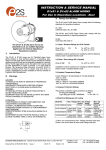
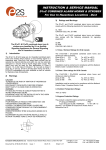
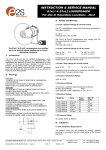

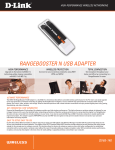
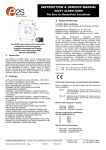
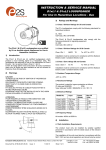

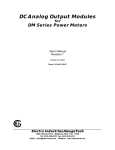
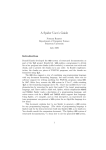
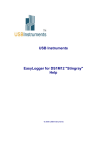

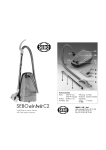
![Manual Audition 4 [By Dr.J.]](http://vs1.manualzilla.com/store/data/005935757_1-4addafd8884e379cc6f9c4cc1fe5fdba-150x150.png)
